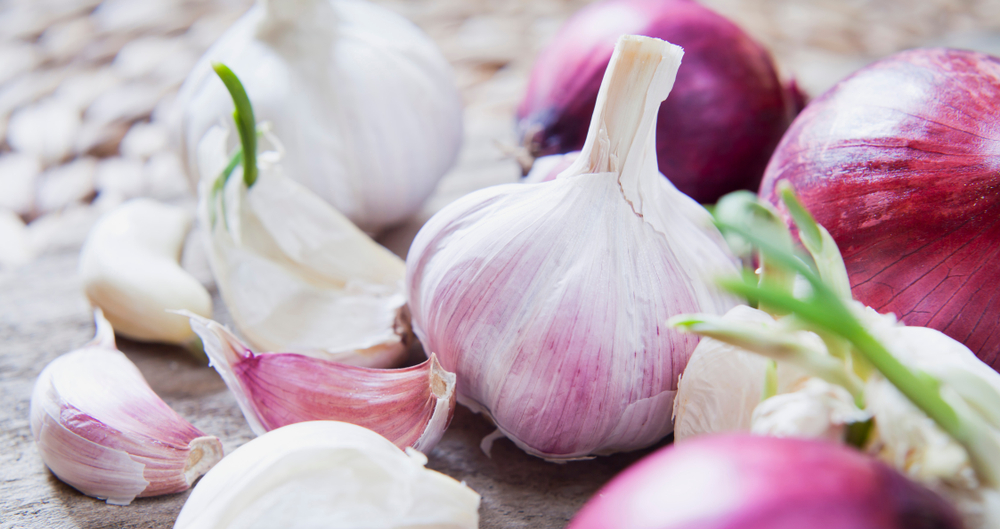
Image Source: Shutterstock.com
When the air turns crisp and the garden starts to fade, it’s tempting to let a few crops stay in the soil “just a little longer.” After all, who wants to spend their chilly weekends digging in the dirt when there’s hot cocoa waiting inside? But here’s the cold truth—literally—some crops simply don’t forgive procrastination.
If you leave them in the ground through winter, you could end up with mushy roots, spoiled harvests, and a spring garden full of rot instead of rich soil.
1. Potatoes
Potatoes might seem tough, but they’re secretly quite sensitive to frost. When left in the ground too long, freezing temperatures can turn their texture grainy and ruin their flavor completely. Worse yet, as they decompose, they can attract pests and spread diseases that linger in your soil for seasons to come. Harvest them before the first hard frost, and let them cure in a cool, dry spot to toughen their skins for storage. Trust us—springtime you will thank fall you for taking the time.
2. Carrots
Carrots are sneaky because they can handle a light frost, which makes gardeners overconfident. But once the deep freeze hits, the moisture in the soil can cause them to crack, turn rubbery, or even rot underground. If the ground freezes solid, you might not even be able to dig them up until spring—and by then, they’ll be history. The key is to harvest them once temperatures consistently dip into the low 30s. If you want to extend their season, pull them up and store them in damp sand inside a cool cellar.
3. Onions
Onions look hardy with their papery layers, but those layers can’t save them from the destructive power of frost. Once temperatures drop too low, they absorb moisture from the soil and quickly become soft, moldy messes. Not only do you lose the onions themselves, but their decay can spread fungus to nearby bulbs. Always harvest them when their tops start to fall over naturally, then let them dry for a few weeks before storing. Winter is no place for onions—they prefer a cozy pantry over an icy patch of dirt.
4. Beets
Like carrots, beets are root vegetables that thrive in cool weather—but not freezing weather. If left in the soil after a hard frost, they can become woody, flavorless, and prone to rot. Worse yet, freezing soil can split their skins and make them unfit for long-term storage. The trick is to harvest them when the weather first turns chilly and then store them in a cold, moist environment. Leaving them behind for winter? That’s one beet you’ll definitely regret.
5. Sweet Potatoes
Unlike their starchy cousins, sweet potatoes are true warmth lovers. Even a light frost can cause the vines and the tubers to blacken, leading to quick decay underground. Once the soil dips below 50°F, sweet potatoes begin to suffer from chilling injury, which damages their cell structure. Dig them up before frost arrives, and handle them gently to avoid bruising. Cure them in a warm, humid spot for about a week, and you’ll preserve their sweetness all winter long.
6. Radishes
Fast-growing and crisp, radishes aren’t made to wait out the winter. If left too long, even in mild climates, they’ll become woody and bitter. A deep freeze only makes matters worse, turning them into mush beneath the soil. Harvest radishes as soon as they mature—usually within a month or so of planting—and enjoy them fresh or pickled. There’s no second chance with these little guys once frost bites.
7. Turnips
Turnips are another crop that teases gardeners with their cold tolerance. They can withstand some chilly nights, but repeated freeze-thaw cycles will destroy their texture and flavor. If the ground freezes around them, they’ll crack, rot, or become too tough to enjoy. Harvest them before the soil temperature drops below freezing, and store them somewhere dark and cool. Leaving them in the dirt is a surefire way to turn your favorite root vegetable into compost material.
8. Garlic (When It’s Already Mature)
This one might surprise you—after all, gardeners are told to plant garlic in the fall. But mature garlic bulbs, left forgotten in the ground, won’t survive the freeze. They’ll split apart, rot, or send up premature shoots that die in the cold. The rule is simple: plant garlic in autumn, harvest in mid-summer, and never leave mature bulbs behind when winter rolls in. If you forget them, you’ll end up with a messy patch of sprouting cloves come spring instead of usable bulbs.

Image Source: Shutterstock.com
Don’t Let Winter Win the Garden Game
Winter might feel like a time for rest, but your garden needs a little pre-hibernation care before the frost sets in. Leaving the wrong crops in the soil can lead to rot, disease, and heartbreak when the snow melts. Harvesting at the right time isn’t just about saving your produce—it’s about protecting next year’s soil and ensuring your garden stays healthy and productive. So grab those gloves, get out there, and give your garden the send-off it deserves before the freeze hits.
Have you ever lost a crop to the cold? Share your experiences, tips, or winter gardening lessons in the comments below.
You May Also Like…
How Storing Root Crops Extends Winter Food Supplies
7 Evergreens That Add Color All Winter Long
10 Shade-Tolerant Crops for Shorter Fall Days
9 Root Vegetables to Store in Sand This Winter
Why Shortened Days Impact Leafy Crops Differently
Leave a Reply